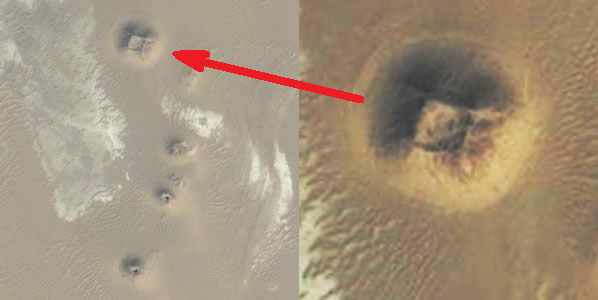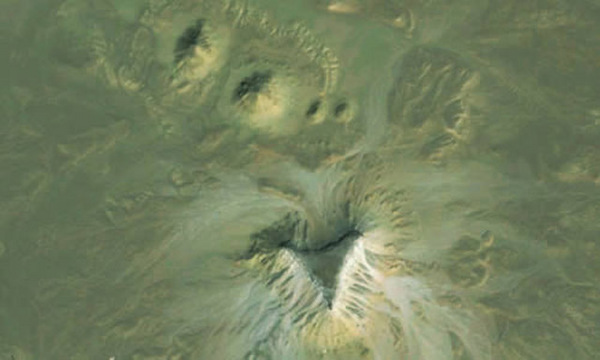Long-lost Egyptian Pyramids Found on Google Earth?

A self-described "satellite archaeology researcher" has garnered widespread media attention with claims that she has found two possible pyramid complexes in Egypt using Google Earth. But experts say her pyramids are nothing more than eroded hills infused with a heavy dose of wishful thinking.
Angela Micol, a North Carolina-based woman who blogs at Google Earth Anomalies, says she discovered the two clusters of mysterious, angular mounds in the Egyptian desert while surveying satellite images of the terrain using Google Earth, the virtual map program. In its coverage, Gizmodo asserts that the desert structures look as if they have been "very deliberately arranged," and that they "bear all the hallmarks of ancient pyramid sites."
If Micol's blog is to be believed, Egyptologists have vetted and are currently investigating her amazing discovery. "The images speak for themselves. It's very obvious what the sites may contain but field research is needed to verify they are, in fact, pyramids," Micol wrote on her blog.
Turns out, further field research won't be necessary after all. These mounds are just your common buttes.
"It seems that Angela Micol is one of the so-called 'pyridiots' who see pyramids everywhere," said James Harrell, professor emeritus of archaeological geology at the University of Toledo and a leading expert on the archaeological geology of ancient Egypt. "Her Dimai and Abu Sidhum 'pyramids' are examples of natural rock formations that might be mistaken for archaeological features provided one is unburdened by any knowledge of archaeology or geology. In other words, her pyramids are just wishful thinking by an ignorant observer with an overactive imagination." [How Much Would It Cost to Build the Great Pyramid Today?]
(Micol did not respond to an email from Life's Little Mysteries as of the time of publication.)
The large, three- and four-sided hills Micol chanced upon are geologic features known as buttes, Harrell told Life's Little Mysteries. Commonly seen in the local Faiyum Desert, such buttes form when a mound of sediment contains a difficult-to-erode layer. When the surrounding sediment gradually erodes, that resistant layer gets left on top, making the hill flat.
Sign up for the Live Science daily newsletter now
Get the world’s most fascinating discoveries delivered straight to your inbox.

Meanwhile, the smaller hills found in Micol's Google Earth screenshots are circular, and thus nothing like pyramids, Harrell said.
Other geologists attribute the features to the forces of nature as well. "What it looks like to me is an area where a resistant layer of stone is underlain by soft rock, perhaps shales. If that is so, the triangular one looks very much the sort of feature common in the U.S. southwest, and might be called a butte," said Clair Ossian, a geoarcheologist at Tarrant County College who has studied Egypt's sites.
So in summary, sorry folks: nothing to see here but a couple of big buttes. The question is how they garnered so much breathless, and factless, media attention.
This story was provided by Life's Little Mysteries, a sister site to LiveScience. Follow Natalie Wolchover on Twitter @nattyover or Life's Little Mysteries @llmysteries. We're also on Facebook & Google+.
Natalie Wolchover was a staff writer for Live Science from 2010 to 2012 and is currently a senior physics writer and editor for Quanta Magazine. She holds a bachelor's degree in physics from Tufts University and has studied physics at the University of California, Berkeley. Along with the staff of Quanta, Wolchover won the 2022 Pulitzer Prize for explanatory writing for her work on the building of the James Webb Space Telescope. Her work has also appeared in the The Best American Science and Nature Writing and The Best Writing on Mathematics, Nature, The New Yorker and Popular Science. She was the 2016 winner of the Evert Clark/Seth Payne Award, an annual prize for young science journalists, as well as the winner of the 2017 Science Communication Award for the American Institute of Physics.











